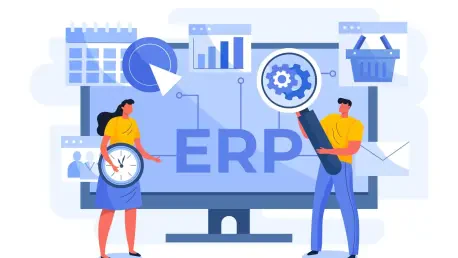What happens when a booming industry like workwear supply meets the relentless pace of ecommerce, yet struggles with outdated systems that can’t keep up with demand? This is the reality for many suppliers grappling with operational chaos while trying to meet customer expectations for speed and reliability in 2025. Enterprise Resource Planning (ERP) systems are emerging as a powerful solution, promising to overhaul inefficiencies and turbocharge online capabilities for businesses in this sector. This feature delves into the transformative potential of ERP, spotlighting a real-world case that illustrates its impact on workwear suppliers navigating the digital marketplace.
Why Workwear Suppliers Are Embracing ERP for Growth
The workwear industry is experiencing unprecedented demand as businesses across sectors prioritize safety and durability in employee gear. However, rapid growth often exposes cracks in operational frameworks, especially for suppliers reliant on antiquated technology that hinders scalability. ERP systems are gaining traction as a strategic tool to bridge these gaps, offering a unified platform to manage everything from inventory to customer orders seamlessly.
This shift isn’t just about keeping up—it’s about staying ahead. With ecommerce driving B2B transactions, suppliers face pressure to deliver flawless online experiences while juggling complex supply chains. ERP adoption is becoming a cornerstone for those aiming to turn these challenges into opportunities, ensuring they can scale without sacrificing efficiency or customer satisfaction.
The Digital Struggles of Workwear Suppliers
Navigating the ecommerce boom isn’t a smooth ride for workwear suppliers. Many grapple with legacy systems that falter under the weight of increased order volumes, leading to cumbersome manual processes that drain time and resources. This mismatch between old tech and new demands creates bottlenecks, slowing down everything from order fulfillment to inventory updates.
Customer expectations add another layer of complexity. Buyers now demand real-time updates, fast shipping, and personalized service—standards that outdated setups struggle to meet. Without modernization, suppliers risk losing ground to competitors who have already adapted to the digital landscape, highlighting the urgent need for robust solutions that can handle today’s ecommerce realities.
ERP: A Game-Changer for Ecommerce in Workwear Supply
ERP systems stand out as a pivotal force for workwear suppliers aiming to excel in ecommerce. By integrating critical functions like sales, inventory, and order processing into a single platform, these systems eliminate manual errors and streamline workflows. A prime example is Workwear Mallusk, a Northern Ireland-based supplier, which turned to Forterro’s Orderwise Cloud ERP to overcome inefficiencies tied to their old infrastructure.
Beyond operational harmony, ERP delivers real-time inventory visibility, preventing costly overstocking or stockouts that frustrate customers. It also ensures seamless ecommerce integration, allowing for smoother online transactions and an enhanced buyer experience. Moreover, the scalability of ERP means suppliers can handle surging demand without breaking a sweat, positioning them for sustained growth in a competitive market.
Real Stories of ERP Transformation in Action
The impact of ERP isn’t just a concept—it’s a reality for companies that have taken the plunge. Gavin Kane, IT Manager at Workwear Mallusk, shared that adopting Orderwise Cloud was a turning point, thanks to its flexibility and features like handheld scanner integration for warehouse management. This directly tackled their long-standing operational hurdles, paving the way for efficiency.
Echoing this sentiment, Tom Price, Director at Forterro, pointed out that Workwear Mallusk represents a wider industry trend toward digital transformation. Suppliers are increasingly leveraging connected systems to scale and meet ecommerce demands. These insights from the field demonstrate how ERP isn’t merely a tool but a catalyst for redefining business potential in the workwear sector.
Practical Steps for Workwear Suppliers to Adopt ERP
For workwear suppliers ready to embrace ERP, a strategic approach can make all the difference. Start by pinpointing specific inefficiencies—whether it’s sluggish order processing or poor online integration—to ensure the chosen system addresses core issues. Selecting a scalable, ecommerce-friendly solution like Orderwise Cloud can align with long-term business goals.
Training is another critical piece of the puzzle. Equipping staff with the skills to navigate the new system minimizes disruptions and boosts adoption rates. Additionally, leveraging real-time data from ERP analytics can empower suppliers to anticipate demand trends and make informed decisions. Rolling out the system in phases through pilot testing further helps to refine processes before full implementation, setting the stage for a smooth transition.
Looking back, the journey of companies like Workwear Mallusk showed that embracing ERP was a decisive step to conquer operational challenges and strengthen ecommerce capabilities. Their experience underscored the value of modern technology in freeing up resources for expansion. As the industry evolved, those who invested in scalable solutions found themselves better equipped to handle market shifts. The lesson was clear: suppliers needed to prioritize integrated systems to stay competitive. Moving forward, the focus should be on continuous adaptation, using ERP insights to refine strategies and explore innovative ways to meet customer needs in an ever-changing digital landscape.









